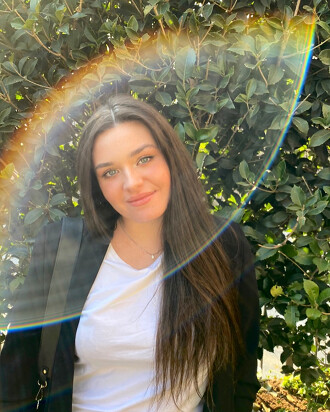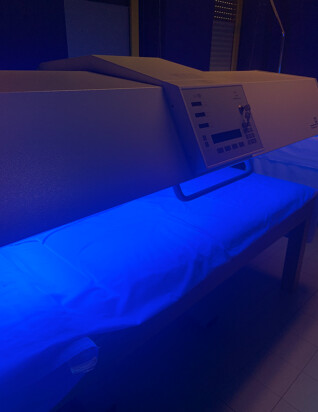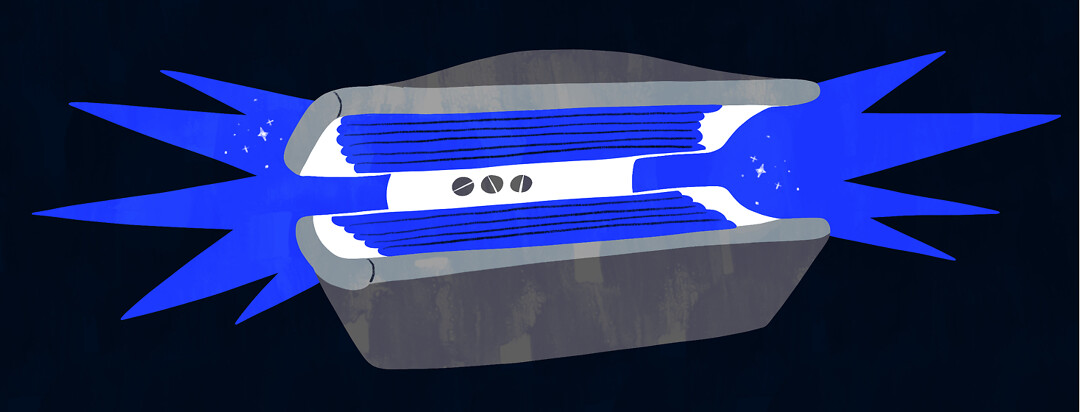Starting Phototherapy? Federica Shares What to Expect
The Editorial Team at AtopicDermatitis.net is highlighting people in the eczema community and their healing journeys. We talked to Federica (@fedicotterous), who tells us all about starting phototherapy for the first time.

Federica's atopic dermatitis story
I was diagnosed with atopic dermatitis (eczema) at birth. I went through different stages and experienced several types of eczema. As a kid, I was mainly affected by the "standard" rashes, but growing up, I developed more nummular and dyshidrotic eczema.
I tried several treatments depending on the type of flaring I was experiencing, including antihistamines (cetirizine and oxatomide) and steroid creams, injections, and tablets (betamethasone). The antihistamines helped with the itching, and steroids made my skin so beautiful, but you know the deal with steroids ...
1. It doesn’t last.
2. The side effects can be intense.
So, I only went for it when I really couldn’t take it anymore. In September 2020, due to severe flaring, I was prescribed a therapy with a stronger steroid cream, and in January, I started phototherapy.
Phototherapy sessions are done in cycles
Phototherapy is prescribed in cycles. Each cycle is 6 sessions. Initially, I was prescribed 3 cycles of UVB total body (2 sessions each week).
UVB vs. UVA-1
The UVB sessions last a few seconds (I think my first was 20 seconds), and the timing increases throughout the therapy depending on how your skin reacts – up to to 4 minutes, approximately.
After my second UVB session, I started experiencing a lot of discomfort. During the treatment, I felt like I had insects pinching my skin around, so my dermatologist decided to change me to UVA-1 for the remaining 16 sessions, which is what I am currently doing.
UVA-1 sessions last longer, starting from 11 minutes per side (it’s a bed, so you have to flip halfway through), up to over an hour.
Ask your doctor about steroids
My dermatologist advised me to continue applying steroid cream (mometasone) and gentamicin for the open cuts and wounds. I also apply eosin on the more severe wounds, but that is not advisable to do before the phototherapy session since the dye is highly photosensitive, according to my nurse.
Showing up for my first session
During our last meeting before starting the therapy, my dermatologist gave me a document informing me about what the treatment was going to be like, potential side effects, and other information. For example, to go in the treatments you cannot have any fragrance on, including makeup or deodorant.
I received a list of medicines that could potentially interact with the treatment, making it less efficient, or keep it from working completely. It is really important that you check whether you are taking any of these medicines.

Entering the booth
On my first day, the nurse checked my documents and walked me to the UVB cabins. I always say these things look like a fridge had a baby with a changing room. You go into the booth/bed wearing only your underwear, and there is no specific requirement for it. I was given a pair of protective glasses and walked into the cabin.
It's really hot in there!
It’s so hot, I had no idea! I started UVA-1 with about 20 minutes of treatment, but now I am going up to an hour and a half. The temperature inside is extremely hot (over 60 degrees Celsius), so doing it in the colder months of the year was definitely a good idea.
Noticing improvements in my skin
I have recently started my third cycle. I think I started noticing an improvement at the end of the first cycle. The redness and rashes are gone. The irritability is gone. My skin is still far from perfect, but much closer than it was before. Overall, I am satisfied with the treatment.
Advice for someone starting phototherapy
According to my experience, there is nothing to worry about. It is really important you trust your nurses completely and report how you feel during and after the treatment. I think the relationship with the nurses is one of the most important things. They are there to help you and make sure you are as comfortable as possible. If I hadn't done that, I wouldn’t have changed from UVB to UVA-1.
Drink a lot of water, and keep your skin hydrated after the treatment with face masks and moisturizers.
What has your experience been like with phototherapy? Have you tried it? Why or why not?

Join the conversation